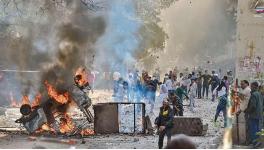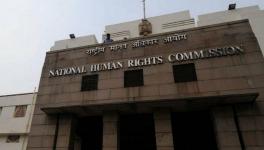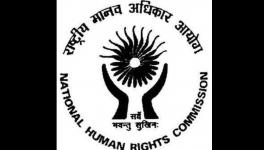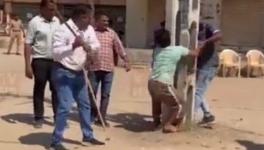Are the Police Seen as Perpetrators of Crime or Protectors in India?
Though the police force is a strong column of an alive democracy, its overall performance has been far less than satisfactory. But there has always been the judiciary which has demonstrated an inclination to make changes to the system of police administration in order to bring about transparency and accountability. The ball was set rolling when former IPS officer Prakash Singh petitioned the Supreme Court to take cognisance of the toxic irregularities plaguing the police system and prayed to the Court to pass directions to provide an efficacious roadmap which would control the abuse of power. Though the Prakash Singh guidelines were not implemented by states, courts have been moving to secure accountability from police officers, says MAHALAKSHMI PAVANI.
—————–
Who Will Protect the Public When the Police Violate the Law?
—Ramsey Clark, American lawyer and activist
The police play an instrumental role in the protection of law and order in our country, which has a panoply of different religions, languages, castes, races and prides itself as the world’s most boisterous democracy.
The title of being the world’s largest democracy is not just based on the density and diversity of the people belonging to India, but also how consensually and connectedly institutions that support the superstructure of democracy are functioning.
The police force is a strong column, if not a pillar of an alive democracy. However, if one evaluates its overall performance, it has been far less than satisfactory.
The ways and means of its functioning in India are dismally inadequate when measured by the yardstick of modernity, technological breakthroughs and preservation of human rights.
This is not to negate the fact that there is a striking deterioration in the effective functioning of the police even in western countries where recent instances have shown the discriminatory prejudices against historically subjugated communities.
A force with a notorious reputation
The police force over the last three decades has acquired a notorious reputation of being dismissive to the rule of law, being prone to corruption and cronyism, repressing codified human rights, and for inspiring a negative feeling in the common man, who despite a distressing situation, would prefer not to approach the police for redress.
It was the judiciary that took the leap in bridging the gap for ushering changes and has shown an interest in remedying this scourge of the demoded law–The Police Act, 1861. The executive, notwithstanding the colour of the ruling political front, has been staunchly opposed to these reforms as it involves partially giving up the authority over the police.
The Police Act of 1861 was created as an offshoot to the Indian insurgency against the British in 1857. The purpose of the Act was simple–to yet exploit India’s rich resources without any impediments from forceful fronts and to exert as much authority as possible to cage dissenters in a boundary.
The main purpose of the Act, however, was to create a different class of enforcers of the law. These were enforced on on an “inferior” class of individuals, most of whom were merchants, weavers, artisans, craftsmen and goldsmiths. The law is implicitly worded in a manner that assumes superiority of the law enforcer over whom the law is to be applied to as if the same would not be applicable to the law enforcer.
The judiciary has been the only institution to have demonstrated an inclination to make changes to the system of police administration in order to bring about transparency and accountability. The ball was set rolling when a former IPS officer Prakash Singh petitioned the Supreme Court to take cognisance of the toxic irregularities that were plaguing the police system and prayed to the Court to pass directions in order to provide an efficacious roadmap which would control the abuse of power.
The police force over the last three decades has acquired a notorious reputation of being dismissive to the rule of law, being prone to corruption and cronyism, repressing codified human rights and inspiring a negative feeling in the common man. Despite distressing situations, they would prefer not to approach the police for redress.
Thereafter, as an interim measure, the Court appointed a committee headed by former IPS officer and Director General of Police Julio F Riberio to examine the flaws of the present system and provide recommendations to inculcate accountability. During the pendency of this case, the Court was assisted with recommendations from bodies like the NHRC and Law Commission Reports which dealt with aspects of improving the police system in India.
Soli Sorabjee Committee
Taking cognisance of this, the government of the day also appointed the Soli Sorabjee Committee to draft a new police act which would be different in its outlook and redefine the role of police vis-a-vis the citizen by discarding the colonial mindset with which the old law was created.
In 2006, nearly a decade later, the Supreme Court delivered a phenomenally path-breaking judgment that contained useful and practicable directions to central and state governments in the Prakash Singh vs Union of India. Some key takeaways from the judgment were:
*Establishment of a State Security Commission: It would be headed by a chief minister or home minister of a state with a DGP as the Commission’s secretary. This body would lay down guidelines for performance evaluation, policy framework and prepare bi-annual publicly available reports of such works.
*Guaranteed Minimum Tenure of DGP: A two-year minimum guaranteed period was decided on the minimum tenure of a DGP. This was done to ensure the independence of the head of the police force so as to insulate them from political oppression.
*Creation of a Police Complaints Committee: Such a Committee would inquire into complaints against the police. This was done to replace the opaqueness of departmental inquires and would be headed by a retired judge.
*Separating investigation of crime from governance and law and order: The motive behind this was to ensure a coercion-free team of investigators who would not be at the behest of a draconian executive to stifle facts.
*Setting a Police Establishment Board: This Board would be in each state and its functions would include deciding postings, transfers, promotions and other service-related matters of officers below the rank of deputy superintendent of police.
*Establishment of a National Security Commission: This would be formed at the central level and would empanel experts to be given to the appropriate appointing authority for selection of chiefs of central police organisations.
States reluctant to implement Prakash Singh judgment
Though the Prakash Singh judgment paved the way for a new and robust mechanism that would promote discipline and accountability, states were reluctant to accept it as it diluted their multiple and solely used powers.
The Court was constrained to sit in the execution of its judgment of 2006 and ensure compliance by appointing one monitoring committee after another for another nine years. This has just proved that the powers at play did not wish the police to have a free hand in managing their own affairs.
Another vital aspect of police reforms that cannot be dealt summarily is the issue of custodial torture and deaths of undertrials. The Supreme Court again has, in innumerable cases ranging from Nilabati Behara to DK Basu, sternly warned police forces to be wary of using force on undertrials. But in the real world these instructions are salutary.
As it is, with the current set of redressal methods against erring police officials, it is unthinkable to lodge a complaint against the excesses of a police officer unless the affected party is highly affluent or placed in a higher position. Even that would be falling short when the question arises as to making the minutes of a departmental inquiry public.
The Court’s directions of protecting primary human rights during and preceding a trial remain unenforceable until the strictures in Prakash Singh’s case are adopted in letter and spirit by each state and institutional changes are carried out, both in terms of implementing the verdict and revamping the imperial police law.
The police force over the last three decades has acquired a notorious reputation of being dismissive to the rule of law, being prone to corruption and cronyism, repressing codified human rights and inspiring a negative feeling in the common man. Despite distressing situations, they would prefer not to approach the police for redress.
Despite the non-implementation of Prakash Singh guidelines, courts have been moving in a direction to secure accountability from police officers. In Amol Vitthalrao Kadu V. State of Maharashtra (2019), the Supreme Court modified a High Court order which imposed a fine of Rs 7 lakh on the state to be handed over to the victim’s relatives for unnatural custodial death.
The High Court held that the Rs 7 lakh could be recovered from the police officer on whose watch the victim died. The Supreme Court held that the fine would be recoverable from the official in question when liability of the victim’s life would be fastened onto him.
In Re: Inhuman Conditions of 1382 Prisons (2017), the Supreme Court referred to the Mandela Standard Minimum Rules for Treatment of Prisoners while emphasising that the death/disappearance/serious injury of a convict/undertrial should logically follow an inquiry, and compensation to kin should be made a rule in case of death or disappearance of a convict or undertrial following Article 9(5) of ICCPR 1966.
In Dalbir Singh V. State of U.P. (2009), the Court, however, took a backward approach by stating that no compensation could be granted until it could be ascertained whether custodial death took place. The Court said that in view of the sanction for the prosecution being obtained and charge sheet being filed, there was no need of any intervention, not even an interim compensation which could be given gratis as litigation would take years to secure a conviction against a police official. The Court’s view on custodial torture and extrajudicial methods can be summed up in the magniloquent words of the Supreme Court’s humanist judge VR Krishna Iyer in Raghbir Singh V. State of Haryana (1980) where it was held:
“2. We are deeply disturbed by the diabolical recurrence of police torture resulting in a terrible scarce in the minds of common citizens that their lives and liberty are under a new peril when the guardians of the law gore human rights to death. The vulnerability of human rights assumes a traumatic, torture some poignancy when violent violation is perpetrated by the police arm of the State whose function is to protect the citizen and not to commit gruesome offences against them as has happened in this case, Police lock-up if reports in newspapers have a streak of credence, are becoming more and more awesome cells. This development is disastrous to our human rights awareness and humanist constitutional order.
“3. The State, at the highest administrative and political levels, we hope, will organise special strategies to prevent and punish brutality by police methodology. Otherwise, the credibility of the rule of law in our Republic vis-a-vis the people of the country will deteriorate.”
Police as perpetrators during pandemic
During the pandemic, the country witnessed a degradation in the duties the police were performing. Some examples:
- Burning the body of a rape victim in Hathras, Uttar Pradesh, without parental consent.
- The custodial deaths of Jayaraj and Bennicks in Sathankulam, Tamil Nadu, whose only fault was to keep their shop open 10 minutes beyond a state-imposed curfew.
- The encounter killing of gangster Vikas Dubey who was hailed as a kingpin mafia who had the support of the powerful.
- A police commissioner making fervent pleas of arresting a Bollywood actress in an ongoing investigation of suicide.
- The arrest of Arnab Goswami, editor-in-chief of Republic TV.
- These incidents show that substantial reform needs to be carried out in conjunction with the Prakash Singh judgment and the Model Police Law, 2006.
One way in which all these afflictions can be curbed is to fill up the vacancies in the police force. As of 2019, there were over five lakh vacancies in the police force. These can be filled up not just with men or women, but by transgenders too. The enrolment of transgenders in the constabulary force as well as the higher rungs of the IPS will serve a dual purpose – (i) filling up vacancies which could lead to a decline in corruption (ii) empowerment of the transgender communities to assuage the historic wrongs committed on them.
The article was originally published in The Leaflet.
(Mahalakshmi Pavani is a senior advocate practicing in the Supreme Court. Research inputs by Advocate Neeleshwar Pavani. Views are personal.)
Get the latest reports & analysis with people's perspective on Protests, movements & deep analytical videos, discussions of the current affairs in your Telegram app. Subscribe to NewsClick's Telegram channel & get Real-Time updates on stories, as they get published on our website.
























